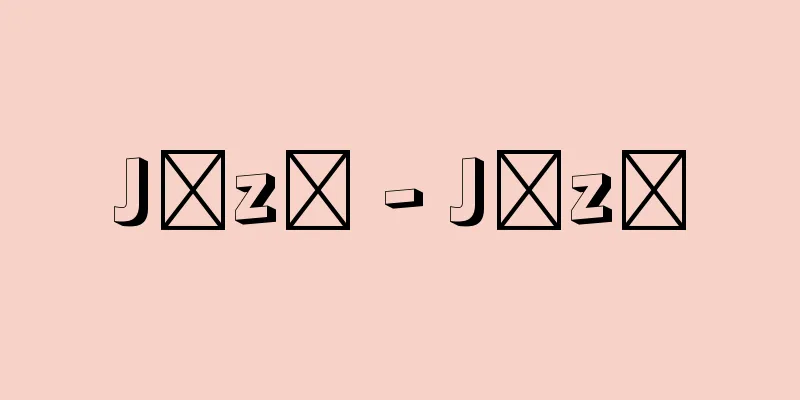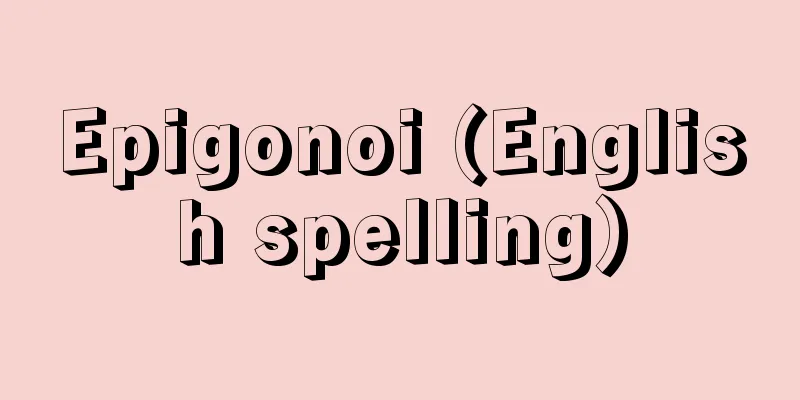Lockheed Scandal - Lockheed Scandal

|
The largest corruption case since World War II, involving the American Lockheed Corporation (now Lockheed Martin) selling aircraft to Japan. This case was a typical example of structural corruption resulting from the collusion between the political, bureaucratic, and financial circles that arose as a result of the long-term dictatorship of the Liberal Democratic Party, and exposed to the public the corrupt and money-driven nature of LDP politics, symbolized by Kakuei Tanaka. On February 4, 1976, at a hearing of the Subcommittee on Multinational Corporations of the U.S. Senate Committee on Foreign Relations (chaired by Frank Church), Lockheed's accountant, Findlay, testified about the facts of the company's illegal payments of subversive funds, and on February 6, the company's vice president, Kochan, testified about the specific flow of funds. This brought the existence of the corruption scandal into full light. The background to the emergence of these testimonies is as follows: Since the Kennedy administration, the US government has placed importance on a policy of supporting and promoting arms exports by private companies, and this was further strengthened after the Nixon administration came to power. Lockheed had strong ties with the Nixon administration, and expanded its sales channels by using the government as a middleman for sales and by using large amounts of funds for secret operations. However, as criticism of Nixon grew after the Watergate scandal, suspicions arose that Lockheed's business practices were a misuse of government-subsidized funds, and an investigation was launched. The investigation uncovered suspicions regarding the sale of large passenger aircraft (Airbus) L-1011 Tristar to All Nippon Airways, and the adoption of the Defense Agency's (now the Ministry of Defense) next-generation main fighter F-15 and anti-submarine patrol aircraft P3C. In order to sell these three models, Lockheed Corporation bribed many LDP Diet members and high-ranking government officials with a large amount of bribe funds totaling more than 3 billion yen through its secret agent in Japan, Kodama Yoshio, and its agent Marubeni and All Nippon Airways. The central suspicion was that the then Prime Minister, Tanaka Kakuei, had promised the introduction of the above three models based on his official authority as Prime Minister at the Tanaka-Nixon meeting held in Hawaii at the end of August 1972, and had accepted 500 million yen as a reward. The then Prime Minister, Miki Takeo, promised to thoroughly investigate the truth, and on February 16 and 17, 1976, the House of Representatives Budget Committee summoned witnesses including Osano Kenji (1917-86), then head of Kokusai Kogyo (suspected of having engaged in political manipulation at Kodama's request), as well as people connected with Marubeni and All Nippon Airways. Meanwhile, the Tokyo District Public Prosecutors' Office began the first joint investigation with the Metropolitan Police Department and the National Tax Agency, and set out to uncover the full extent of the incident. As a result, on March 13, 1976, Kodama was indicted on suspicion of tax evasion to the tune of over 800 million yen. Following this, following the receipt of the records of the commissioned interrogations of Kochan and others under the Japan-U.S. Mutual Legal Assistance Agreement, a compulsory investigation was launched and Marubeni's former chairman Hiyama Hiroshi (1909-2000), former senior managing directors Okubo Toshiharu (1914-91) and Ito Hiroshi (1927-2001), and ANA's then president Wakasa Tokuji (1914-2005), then vice president Watanabe Naoji (1914-94), and others were arrested on suspicion of perjury in the Diet, violation of the Foreign Exchange and Foreign Trade Act, and bribery. Osano was also arrested on suspicion of perjury. On July 27, Kakuei Tanaka was arrested for violating the Foreign Exchange Law and accepting bribes, and in August, former Parliamentary Vice-Minister of Transport Takayuki Sato (1928-) and former Minister of Transport Tomisaburo Hashimoto (1909-90) were both arrested for accepting bribes. In addition, at a secret meeting of the House of Representatives Special Committee to Investigate the Lockheed Problem on November 1, the names of Nikaido Susumu, Sasaki Hideyo, Fukunaga Kazuomi, and Kato Mutsuki were specified as so-called "gray officials" who had received money but were not arrested due to the statute of limitations. Nakasone Yasuhiro was also considered to be one of the gray officials and was questioned for his involvement in Kodama's manipulations, but the suspicions were not resolved. The Tokyo District Court began trials for the Marubeni route and the All Nippon Airways route in January 1977, and the Kodama-Osano route in June. There were 17 defendants. The trial for Kodama was concluded, but Kodama died on January 17, 1984, and the trial ended without a verdict. The whereabouts of the large amount of funds for the operation were never revealed. In the case of the Marubeni route, which is attracting attention, the Marubeni side admitted to the transfer of 500 million yen and advanced the "Marubeni Messenger Theory" that it was only at the instruction of Lockheed, but the Tanaka side denied the transfer of the 500 million yen at all, using the alibi of Enomoto Toshio, Tanaka's secretary at the time of the transfer. However, Enomoto's alibi collapsed when Enomoto's ex-wife Mieko testified (October 1981) that Enomoto had made a statement admitting to the transfer of the 500 million yen. In November 1981, Osano was sentenced to one year in prison, and in January 1982, six ANA executives were found guilty (with suspended sentences), and in June, Hashimoto and Sato were found guilty (with suspended sentences). Then, on October 12, 1983, Tanaka was sentenced to four years in prison, and the two Marubeni executives, excluding Okubo, were also sentenced to prison (with suspended sentences), marking a severe verdict on the Prime Minister's crimes. All the defendants except Watanabe appealed to the Tokyo High Court. The appeal court rulings were against all appeals except for Osano, whose prison sentence was reduced to a suspended sentence (April 1984) (the ANA route was in May 1986, and the Marubeni route in July 1987). Seven others then appealed to the Supreme Court (Sato withdrew his appeal in July 1987, Ito in August the same year; Osano died in October 1986, and Hashimoto in January 1990). The Supreme Court rulings dismissed the appeals of Wakasa and Hiyama, and their guilty verdicts were upheld (Wakasa in 1992, Hiyama in 1995). Tanaka died in 1993, so the charges were dismissed. Related to this case were the fake phone call incident in which Assistant Judge Kito Shiro of the Kyoto District Court pretended to be the Attorney General Fuse and asked Prime Minister Miki to exercise his authority, and the gambling case with Hamada Koichi, in which the $200,000 Osano received was used to pay off the debts of Hamada Koichi, then a member of the Liberal Democratic Party, at a Las Vegas casino. Tanaka also insisted that his victory in the general election was a "purification," and led the Tanaka faction, dominating Japanese politics as a de facto kingmaker ("the dark general of the political world"). He appointed pro-Tanaka and "hidden Tanaka factions" as successive Ministers of Justice, and used his political power to intervene in trials. These were widely viewed as serious challenges to democratic politics. However, after Tanaka suffered a cerebral infarction in February 1985, his political power rapidly declined. In addition, the "Miki-oroshi" campaign, which sought to force the resignation of Prime Minister Miki, who insisted on uncovering the truth, and the LDP's disregard for political ethics, as exemplified by Sato, who continued to criticize the prosecutors and courts even after giving up on his appeal and who continued to be active in parliament until he was defeated in 2000, were also highlighted as serious issues. [Satoru Ito] "The Complete Record of Tanaka Kakuei Research, Volume 2, by Tachibana Takashi (1976, Kodansha)" ▽ "The Lockheed Trial and Its Era, Vol. 1-4, and Dissecting the Criticism of the Lockheed Trial, Vol. 1-3, by Tachibana Takashi (Asahi Bunko)" ▽ "The Prime Minister's Crime: Tanaka Kakuei and the Lockheed Scandal, New Edition, by Chikushi Tetsuya (1983, Simul Publishing)" ▽ "The Truth about Tanaka Kakuei: The Lockheed Scandal from the Viewpoint of His Defense Attorney, by Kimura Kisuke (2000, Kobundo)" ▽ "The Structural Scandal of Lockheed, edited by Ueda Koichiro (Shinnihon Shuppansha, Shinnihon Shinsho)" [References] | | | | | |Source: Shogakukan Encyclopedia Nipponica About Encyclopedia Nipponica Information | Legend |
|
アメリカ・ロッキード社(現ロッキード・マーチン社)の日本に対する航空機売り込みに絡む第二次世界大戦後最大の汚職事件。この事件は、自由民主党の長期独裁体制の結果生じた政界・官界・財界の癒着構造に起因する典型的な構造汚職であり、田中角栄に象徴される自民党政治の腐敗・金権体質を国民の前に暴露するものであった。 1976年(昭和51)2月4日、アメリカ上院外交委員会多国籍企業小委員会(委員長フランク・チャーチ)の公聴会で、ロッキード社会計検査担当会計士フィンドレーは、同社の工作資金の不正支払いの事実を証言し、続いて2月6日、コーチャン同社副社長は具体的な資金の流れに関する証言を行った。これにより疑獄事件の存在が全面的に明るみに出た。 こうした証言が登場した背景は次のようなものである。アメリカ政府はケネディ政権以降、民間企業による兵器輸出を援助・促進する政策を重視したが、ニクソン政権成立後それがより強化された。ロッキード社はニクソン政権と強く結び付き、政府を窓口とした売り込みと多額の工作資金の使用によって販路拡大を行った。しかしウォーターゲート事件以降ニクソン批判が高まるなかで、こうしたロッキード社の商法が政府援助に基づく資金の不正使用ではないかとの疑惑が生じ、調査が行われたのであった。 調査で判明した疑惑は、全日本空輸に対する大型旅客機(エアバス)L-1011トライスターの売り込みと、防衛庁(現在の防衛省)次期主力戦闘機F-15と対潜哨戒(しょうかい)機P3Cの採用についてであった。ロッキード社はこれら3機種の売り込みのために、日本における同社秘密代理人児玉誉士夫(こだまよしお)と同社代理店丸紅および全日空を通じて総額30億円を超える多額の工作資金を贈賄し、多数の自民党国会議員と政府高官の買収を行ったというもので、疑惑の中心は、時の総理大臣田中角栄が、1972年8月末にハワイで行われた田中・ニクソン会談において総理大臣の職務権限に基づき前記3機種の導入を約束し、その報酬として5億円を収賄したというものであった。 当時の首相三木武夫(たけお)は真相の徹底究明を約束し、1976年2月16、17日、衆議院予算委員会で、当時国際興業社主であった小佐野賢治(おさのけんじ)(1917―86)(児玉の依頼で政界工作をしたとの疑惑)と丸紅・全日空関係者の証人喚問が行われた。一方、東京地方検察庁は警視庁、国税庁との初の合同捜査を開始、事件の全容解明に乗り出した。その結果、76年3月13日、児玉を8億円余りの脱税容疑で起訴したのに続き、日米司法共助の取決めによるコーチャンらの嘱託尋問調書入手により強制捜査を開始、丸紅からは元会長の檜山広(ひやまひろ)(1909―2000)、元専務の大久保利春(1914―91)・伊藤宏(1927―2001)を、全日空からは当時の社長若狭得治(わかさとくじ)(1914―2005)、当時の副社長渡辺尚次(なおじ)(1914―94)らを、国会での偽証、外為法違反、贈賄の容疑で逮捕し、小佐野も偽証容疑で逮捕した。そして7月27日、田中角栄を外為法違反・受託収賄罪で逮捕、8月には元運輸政務次官佐藤孝行(こうこう)(1928― )と元運輸大臣橋本登美三郎(とみさぶろう)(1909―90)をそれぞれ受託収賄罪で逮捕した。このほか11月1日の衆議院ロッキード問題調査特別委員会秘密会で、金銭授受はあるが時効等で逮捕に至らない、いわゆる「灰色高官」として二階堂進、佐々木秀世(ひでよ)、福永一臣(かずおみ)、加藤六月(むつき)の氏名が明示された。また児玉による工作に関与したとして中曽根康弘(なかそねやすひろ)も灰色高官の一人と目され事情聴取を受けたが、その疑惑は解明されずに終わった。 裁判は東京地裁で1977年1月から丸紅ルートと全日空ルート、6月から児玉・小佐野ルートが開始された。被告17人。このうち児玉については結審したが、84年1月17日児玉が死亡したため判決が下されることなく裁判は終了。多額の工作資金の行方はついに明らかとならなかった。注目の丸紅ルートでは、丸紅側が5億円の受渡しを認めたうえで、それはあくまでロッキード社の指示であるものとの「丸紅メッセンジャー論」を展開したが、田中側は5億円授受の際の秘書榎本俊夫(えのもととしお)のアリバイを武器に5億円授受自体を否定した。しかし榎本アリバイは、5億円授受を認める発言をしていたとの前夫人榎本美恵子の証言(81年10月)で崩れた。81年11月、小佐野に懲役1年の実刑判決が下され、82年1月全日空幹部6人に有罪判決(執行猶予付)、6月橋本、佐藤に有罪判決(執行猶予付)が下った。そして83年10月12日、田中に懲役4年の実刑判決、大久保を除く丸紅幹部2人にも実刑判決(大久保は執行猶予付)が下り、総理大臣の犯罪に厳しい断が下った。渡辺を除く被告全員は東京高裁に控訴した。 控訴審判決は、小佐野が実刑判決から執行猶予付判決になった(1984年4月)以外すべて控訴棄却となった(全日空ルートは86年5月、丸紅ルートは87年7月)。その後7名が最高裁に上告した(佐藤は87年7月、伊藤は同年8月上告取下げ。小佐野は86年10月、橋本は90年1月死亡)。最高裁判決は、若狭および檜山は上告が棄却され有罪が確定した(若狭は92年、檜山は95年)。また田中は1993年(平成5)死亡したため公訴棄却となった。 この事件に関連しては、京都地裁判事補の鬼頭史郎(きとうしろう)が布施検事総長の名をかたって三木首相に指揮権発動を求めたニセ電話事件、小佐野授受20万ドルが当時自民党代議士であった浜田幸一(はまだこういち)のラス・ベガス・カジノでの借金返済にあてられたという浜田幸一とばく事件などが起こった。また田中は総選挙での当選を「みそぎ」と強弁し、田中派を率い事実上のキングメーカー(「政界の闇(やみ)将軍」)として日本政治を牛耳(ぎゅうじ)り、歴代法相に親田中派や「隠れ田中派」を起用、その政治力で裁判への介入を図った。これらは民主政治への重大な挑戦との声が強かった。しかし1985年2月に田中が脳梗塞(こうそく)で倒れて以来、その政治力は急速に衰えた。さらに真相究明を主張する三木首相を退陣させようとした「三木おろし」や、上告断念後も検察・裁判所批判を行い、2000年に落選するまで議員活動を続けた佐藤に代表される自民党の政治倫理軽視の姿勢も重大な問題としてクローズアップされた。 [伊藤 悟] 『立花隆著『田中角栄研究全記録 下』(1976・講談社)』▽『立花隆著『ロッキード裁判とその時代1~4』『ロッキード裁判批判を斬る1~3』(朝日文庫)』▽『筑紫哲也著『総理大臣の犯罪――田中角栄とロッキード事件』新版(1983・サイマル出版会)』▽『木村喜助著『田中角栄の真実――弁護人から見たロッキード事件』(2000・弘文堂)』▽『上田耕一郎編著『構造疑獄ロッキード』(新日本出版社・新日本新書)』 [参照項目] | | | | | |出典 小学館 日本大百科全書(ニッポニカ)日本大百科全書(ニッポニカ)について 情報 | 凡例 |
<<: Lockyer - Joseph Norman Lockyer
Recommend
Harmonica - Harmonica (English spelling)
A type of aerophone instrument. It is also called...
three-day event
...There are also other special events such as ju...
Amiel, Henri-Frédéric
Born: September 27, 1821, Geneva Died: May 11, 188...
Nostoc commune (English spelling) Nostoc commune
…Some freshwater algae are used as food. The main...
Peatland
…Under conditions of water saturation and oxygen ...
Ken Iwasaki
Biochemist. Born in Aizuwakamatsu, Fukushima Pref...
Manchurian crab apple
...Native to mainland China, it is used for bonsa...
Snow erosion - Snow erosion
Erosion caused by the movement of remaining snow ...
golden hamster
...Lifespan: 5 to 7 years. (4) Golden hamster: Ro...
Umemodoki - Japanese plum imitation
A deciduous shrub of the family Ilex (APG classif...
Old Catholicism
A Catholic movement that opposed the dogma of papa...
Rose and Red Lotus Legend - Souka Korenden
A Hangeul novel from the Joseon Dynasty of Korea. ...
Etheria Uprising - Etheria Uprising
...hoping for the support of the Russian Tsar, he...
Imperial General Headquarters-Government Liaison Conference
This wartime leadership organization was created b...
Nature - Zouka
〘Noun〙① The birth, death, transformation, and eter...





![Tateshina [town] - Tateshina](/upload/images/67cc232702955.webp)



